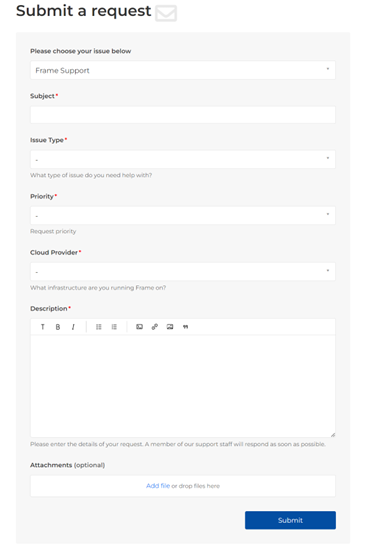Official Dizzion Support Guide
Introduction Introduction
Highlights Highlights
- Worldwide support
centerscenters - Dizzion Support Portal for proactive support and the latest information on our products, knowledge base articles, documentation, downloads, and FAQs.
- State-of-the-art reproduction labs in all major geographies for the quick and efficient turnaround of support
requestsrequests
Dizzion Support Locations Locations
- Multiple Locations in the US
- Belgrade,
SerbiaSerbia
- Americas: North America, Latin America, and the Caribbean
- EMEA: Europe, the Middle East, and Africa
- APJ: Asia Pacific
JapanJapan
Note: Customers are supported based on the organization's geographic location on record. Please review the Support Program section for details on Business Hours and 24/7/365 Support.
Support Program Program
Features Features
- Online resources: Dizzion’s Support Portal offers extensive product documentation, access to software, patches, a knowledge base, unprecedented search capabilities, and other helpful information. Customers can create cases at any time by visiting the support website at support.dizzion.com and entering a new case. If you require a support account, please self-register at portal.nutanix.com.
- Software subscription: The customer is entitled to all platform updates, including major releases, minor releases, bug fixes, and patches issued during the period their subscription is in effect. Customers with a current subscription will be alerted to new releases and can download them from a location provided by Dizzion Support. Please refer to the Software End of Life (EOL) Policy for more details.
24/7/365 Support Support
Note: Priority is determined jointly by the customer and Dizzion. For more information on Priority Levels, see the Initial Response Definition section.
Business Hours Hours
Understanding Case Priorities Priorities
Priority Level and Targeted Initial Response Definitions Definitions
|
Priority Level |
Description |
Target Initial Support Response |
|
P1 |
Emergency: Dizzion Platform services for a Production Dizzion account are completely unreachable, affecting all end-users of the applications/desktops hosted by that account and/or all administrators of the account. |
Within 1 |
|
P2 |
Critical: Dizzion Platform services are available but are experiencing issues that directly impact productivity. Some (but not all) end-users of an application on a Production account cannot reach the application or desktop, and/or some (but not all) administrators cannot reach the Dizzion Console. No workaround is available. Major inconvenience. |
Within 4 |
|
P3 |
Normal: Some end-user sessions are experiencing degraded performance, and/or some administrator Dizzion Console features are not functioning as expected.
|
Next Business Day (NBD) |
|
P4 |
Low: Questions about documentation, processes, or procedures. General requests for information.
General questions on configuration, setup, application issues, and compatibility. |
By the next two business days (N2BD) |
|
RFE |
Requests for Enhancements: Feature requests for the product that aim to improve the customer's experience or functionality. |
Within 2 weeks |
Dizzion Team Roles and Responsibilities Responsibilities
- Responding to support
casescases - Recreating customer issues
- Researching, identifying, and resolving technical product issues
- Working with cross-functional teams within Dizzion to resolve issues
- Documenting case notes accurately and developing solutions for the knowledge
basebase
Support Case Life Cycle Cycle
- Collect information to troubleshoot the problem, including the Dizzion account name, the user or administrator who experienced the issue, the time of the issue, logs, error messages, and all other relevant information.
- Create a Support Case
- Work with the Platform Support Engineer (PSE) to investigate the issue and determine its root cause.
- Resolve and close the Support Case.
Collecting Information to Troubleshoot Your Problem Problem
- Detailed description of the issue
- Dizzion Account Name
- Name(s) of user(s) experiencing the issue
- What infrastructure are you using?
- The time at which the issue occurred
- If the issue is related to an end-user's access or use of their Dizzion session, please provide the session ID(s) for the session(s) where the issue occurred.
- Can you reproduce the issue?
- Steps taken thus far in remediation.
Creating a Support Case
When opening a case, it is important to select the correct product when creating a support case to ensure your case is routed to the right team. The required fields are self-explanatory. The fields "Priority" and "Issue Type" have pulldown menus. The Subject and Description fields define the problem. Please describe the issue in as much detail as possible. Doing so helps us determine if a known document can help immediately, and if not, allows the PSE to perform initial troubleshooting and research before initiating contact. Use the Priority field to ensure ensure a timely response and to set our expectations about the issue’s impact.
Working the Issue
- Asking you for more information.
- Asking you to install specific software or patches.
- Asking for specific debug data from your machine.
- Trying to reproduce the problem in our test environments.
- Verifying software bugs with our engineering team.
- Asking you to implement and test workaround suggestions that may avoid the problem.
- Asking you to involve your staff to help troubleshoot.
- Working with you to involve relevant third-party software or hardware vendors.
Closing a Support Case
Supported Versions
Note: In many situations, if you are on the previous to the current release, you will be required to upgrade to the current version of the component or driver before Support can assist you further, as the issue may have been addressed in the latest release.

